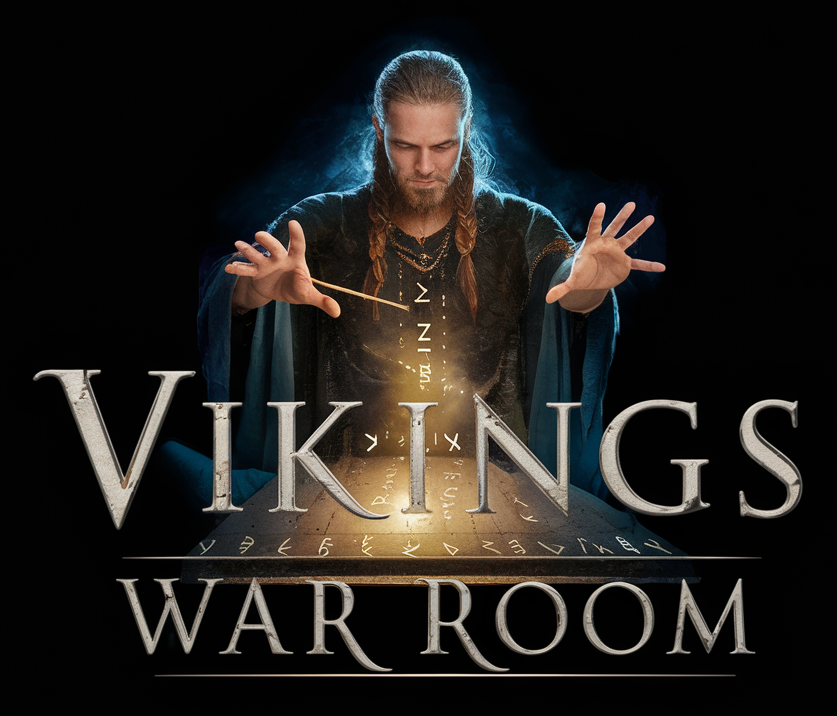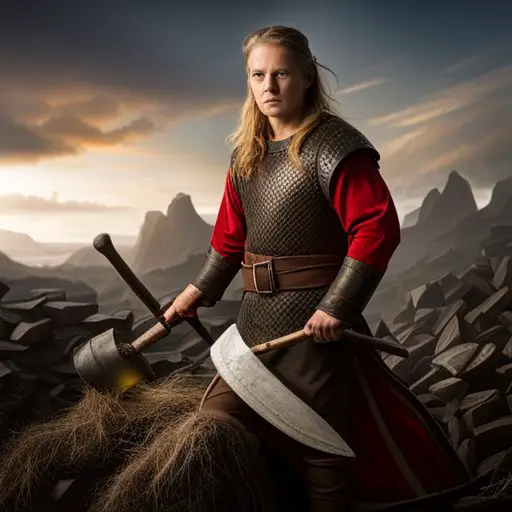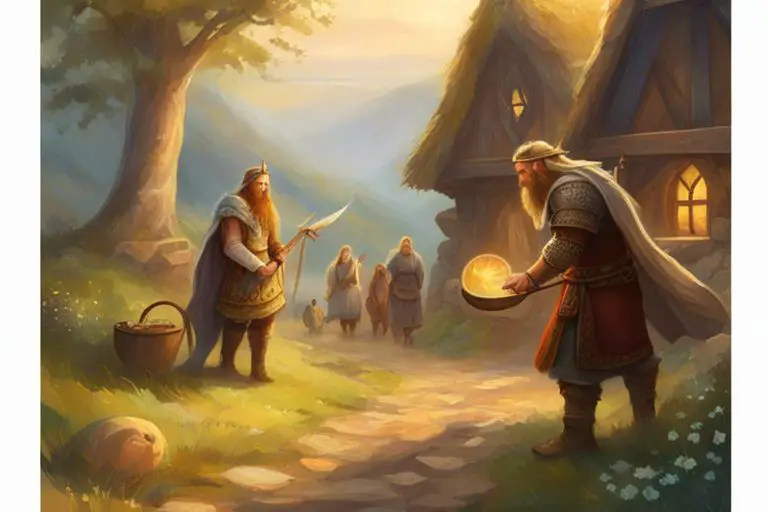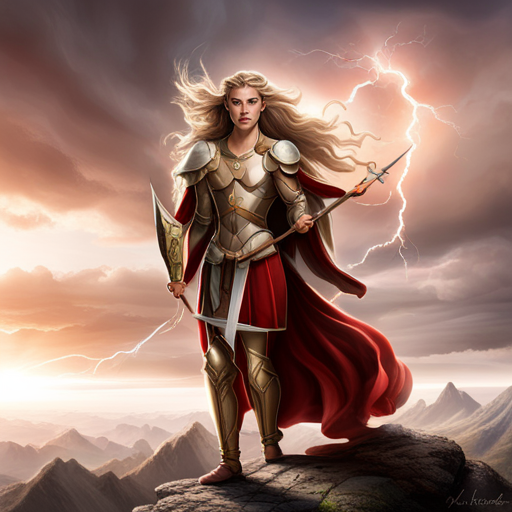I have always been fascinated by the Vikings and their way of life. From their longships to their mythology, everything about them seems both exotic and familiar.
One of the most interesting aspects of Viking culture is their weaponry. The Vikings were known for being fierce warriors, and their arsenal of weapons and tools was a key part of their success.
In this article, I will explore the different types of Viking weapons and tools that were used by Norse warriors. From swords and axes to bows and arrows, shields and armor, shipbuilding and navigation tools, we will delve into the world of the Vikings and uncover the tools that helped them conquer new lands and build their empire.
Join me as we explore the fascinating world of Viking weaponry and discover the arsenal of the Norse warriors.
Swords, Axes, and Other Melee Weapons
The swords, axes, and other melee weapons used by these fierce fighters were not only deadly, but also reflected the skill and craftsmanship of their makers.
Viking swords were typically double-edged and designed for close combat. They were made from high-quality iron and steel, and their blades were often decorated with intricate designs.
Viking axes, on the other hand, were single-edged and primarily used for chopping and hacking. They were also often adorned with ornate designs, reflecting the status and wealth of their owner.
In addition to swords and axes, Vikings also used a variety of other melee weapons, such as spears, maces, and clubs.
Spears were particularly popular due to their versatility and range, and were often used in a phalanx formation.
Maces and clubs, meanwhile, were effective against armored opponents, as they could easily crush through metal plates.
Overall, the Viking arsenal of melee weapons was diverse and deadly, making them fearsome opponents on the battlefield.
But the Vikings didn’t just rely on close combat – they also had an array of ranged weapons at their disposal, such as bows and arrows.
Bows and Arrows for Ranged Combat
For ranged combat, bows and arrows were the go-to choice, allowing Vikings to strike from afar with deadly accuracy. The Viking bow was typically made of yew wood and was around six feet in length. The arrows were made of lightweight materials such as birch or willow and were tipped with iron or bone.
Here are some interesting facts about Viking bows and arrows:
– Bows were often decorated with intricate carvings and designs.
– Arrows were sometimes poisoned with animal venom for added lethality.
Vikings were skilled archers, and archery was a popular sport and pastime. The famous Viking sagas often depict heroes using bows and arrows in battle, such as the legendary warrior, Egil Skallagrimsson.
As important as ranged combat was, Vikings also needed protection from enemy attacks. This is where shields and armor came into play.
Shields and Armor for Protection
If you want to survive a battle, you better have some sturdy shields and armor to protect yourself. The Vikings were no strangers to this concept and had a variety of options to choose from in their arsenal.
Shields were a crucial tool in Viking combat and were often designed with intricate patterns and symbols to intimidate their enemies. Made from materials such as wood, leather, and metal, these shields could range in size from small round shields to larger, rectangular shields that covered most of the warrior’s body. They were often used to deflect blows from enemy weapons and to create a barrier for the Viking’s own attacks.
In addition to shields, Vikings also wore various forms of body armor for added protection. Chainmail was a popular choice and was made from interlocking rings of iron, steel, or bronze. This provided a flexible and durable defense against sword and axe strikes. Other forms of armor included leather and padded cloth garments, as well as helmets to protect the head.
While armor and shields were not invincible, they gave the Vikings a better chance of surviving in combat and were a crucial part of their overall strategy. As important as it was to have proper armor and shields, the Vikings also needed to have efficient shipbuilding and navigation tools to conquer the vast seas.
Navigating treacherous waters and building sturdy ships was crucial for the Vikings to conquer new lands and expand their empire, and they had a range of innovative techniques and equipment at their disposal.
One of their most important tools was the sun compass, which they used to determine their location and direction. This device was made from a wooden disc, which was marked with lines indicating the position of the sun at different times of the day. By rotating the disc and aligning it with the sun, the Vikings could determine their heading and navigate the open sea with relative ease.
In addition to their navigational tools, the Vikings were also skilled shipbuilders. Their longships were designed for speed and agility, with shallow drafts and narrow hulls that allowed them to navigate shallow rivers and fjords. These vessels were often equipped with sails, which allowed them to travel further and faster than other ships of the time.
With their advanced shipbuilding techniques and navigational skills, the Vikings were able to explore new lands, establish trade routes, and expand their influence across Europe and beyond.
As we explore the role of weapons and tools in Viking society, it’s clear that their mastery of shipbuilding and navigation was just one aspect of their impressive arsenal.
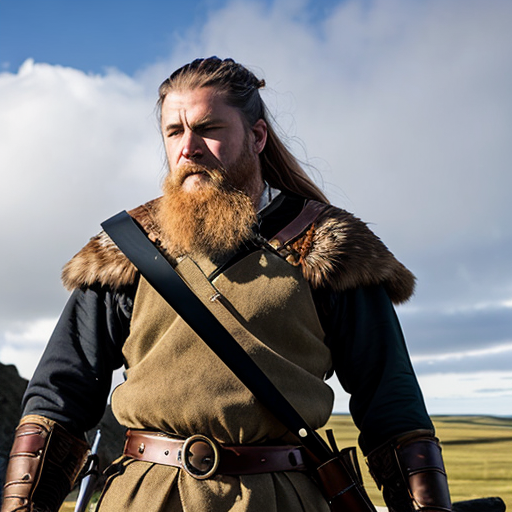
The Role of Weapons and Tools in Viking Society
The Vikings were able to expand their empire by using a variety of weaponry and equipment. They had access to swords, axes, shields, and helmets, which were all intricately decorated with symbols and designs. These weapons were more than just tools for battle, as they were also a symbol of status and pride for the warriors.
In addition to their weaponry, the Vikings also had a range of everyday tools, including hammers, chisels, and saws. These tools were used for carpentry, shipbuilding, and other trades. The Vikings also had navigational tools, such as the sunstone, which allowed them to navigate the seas and travel vast distances. These tools were essential for the Vikings to thrive in their society, as they were a symbol of their ingenuity and resourcefulness.
Overall, the role of weapons and tools in Viking society was crucial to their success as both warriors and traders.
Frequently Asked Questions
How did the Vikings train to become skilled with their weapons?
To become a skilled Viking warrior, training was key. As a young boy, I was taught the basics of weapons handling and combat techniques. This training involved using wooden swords and shields, and gradually progressed to using real weapons.
We also practiced hand-to-hand combat, wrestling, and archery. But it wasn’t just physical training that made us skilled warriors. Mental strength and discipline were equally important. We were taught to be fearless, to never give up, and to always protect our clans.
As the famous Viking adage goes, “Fear not death for the hour of your doom is set and none may escape it.” We embraced this philosophy and lived each day to the fullest, ready to face any challenge that came our way with courage and determination.
Were certain types of weapons reserved for specific classes or ranks within Viking society?
I’ve always wondered if certain types of weapons were reserved for specific classes or ranks within Viking society. After some research, I’ve found that while there were no strict rules, it was common for higher-ranking individuals to have access to more expensive and ornate weapons, such as swords with intricate designs.
However, this didn’t mean that lower-ranking individuals couldn’t use these weapons, they just may not have been able to afford them. Additionally, certain weapons, like the axe, were more commonly used by farmers and lower-class individuals, while swords were more commonly used by higher-ranking individuals and warriors.
Overall, while there were no set rules, there were definitely patterns in the distribution of weapons among different classes and ranks within Viking society.
What kind of materials were typically used to make Viking weapons and tools?
When I think about the materials used to create Viking weapons and tools, I can’t help but imagine the craftsmanship that went into each item.
For example, imagine a skilled blacksmith in a small village, forging a sword for a Viking warrior. The materials used would typically be iron or steel, but the quality of the metal was crucial. The sword would need to be strong enough to withstand battle, yet lightweight enough for the warrior to wield with ease.
The blacksmith would carefully heat and shape the metal, using techniques passed down from generations before. Other materials used included wood for handles, leather for sheaths, and sometimes even bone or antler for decorative embellishments.
The attention to detail and quality of materials used in Viking weapons and tools is a testament to the skill and dedication of the Norse people.
How did Viking weaponry and technology evolve over time?
As I look back on the evolution of Viking weaponry and technology, it’s clear that the Norse warriors were constantly adapting to new challenges and opportunities.
At first, their weapons were simple and functional, designed for close combat and raids. But as they began to trade with other cultures and expand their territory, they started to incorporate new ideas and materials, like iron and steel, into their weapons and tools.
Over time, they became more sophisticated and specialized, with weapons for every situation, from long-range archery to ship-to-ship combat.
It’s no wonder the Vikings were such fearsome warriors – they were always pushing the boundaries of what was possible.
Were there any particularly famous or legendary Viking warriors known for their proficiency with certain weapons or tools?
When it comes to legendary Viking warriors, there are a few names that immediately come to mind.
One of the most famous is undoubtedly Ragnar Lothbrok, who’s said to have wielded a mighty battle-axe.
Another notable warrior is Bjorn Ironside, who was known for his skill with a sword.
And of course, we can’t forget about Lagertha, the shield-maiden who was a master of the spear.
These warriors are just a few examples of the many Vikings who were renowned for their prowess in battle.
Whether they were using swords, axes, spears, or other weapons, Viking warriors were a force to be reckoned with, and their legacy continues to inspire us today.
Conclusion
Overall, learning about the various weapons and tools utilized by Viking warriors has been fascinating. From the deadly swords and axes to the intricate shipbuilding tools, it’s clear that the Norse people were skilled craftsmen and fierce fighters.
It’s interesting to note that despite the emphasis on battle and warfare, Viking society was not solely focused on violence. These weapons and tools were also used for hunting, fishing, and everyday tasks such as building and farming.
One striking statistic to consider is that the average Viking sword weighed between 2-4 pounds, which may seem light compared to modern weapons. However, this weight was perfectly balanced for quick strikes and allowed the wielder to easily maneuver the sword in battle.
It’s important to remember that these weapons were not just instruments of violence, but also symbols of status and culture. The Viking people had a deep connection to their weapons and tools, and their mastery of these objects played a significant role in their daily lives and society as a whole.
